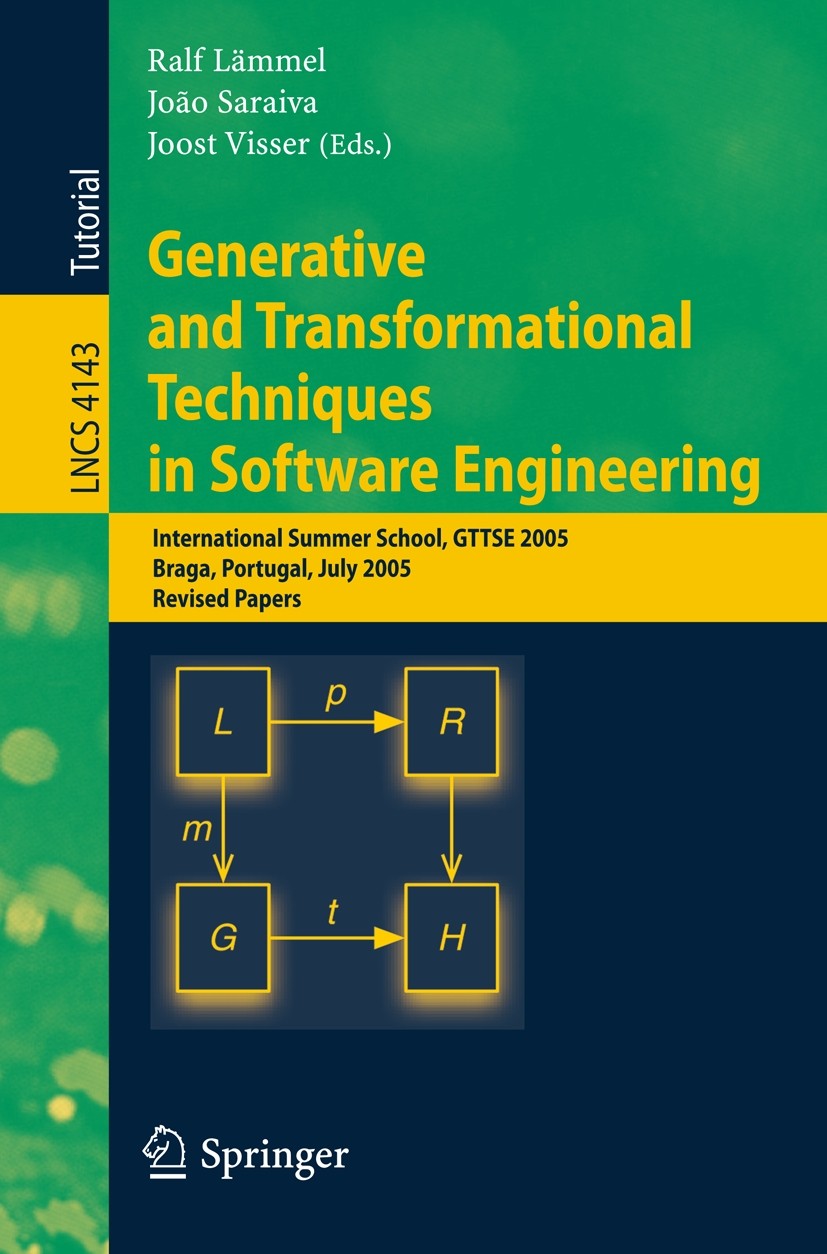| 書(shū)目名稱(chēng) | Generative and Transformational Techniques in Software Engineering |
| 副標(biāo)題 | International Summer |
| 編輯 | Ralf L?mmel,Jo?o Saraiva,Joost Visser |
| 視頻video | http://file.papertrans.cn/383/382364/382364.mp4 |
| 叢書(shū)名稱(chēng) | Lecture Notes in Computer Science |
| 圖書(shū)封面 |  |
| 出版日期 | Textbook 2006 |
| 關(guān)鍵詞 | ; NET; Aspect-oriented programming; C++ programming language; Java; Oracle; Software Engineering; automated |
| 版次 | 1 |
| doi | https://doi.org/10.1007/11877028 |
| isbn_softcover | 978-3-540-45778-7 |
| isbn_ebook | 978-3-540-46235-4Series ISSN 0302-9743 Series E-ISSN 1611-3349 |
| issn_series | 0302-9743 |
| copyright | Springer-Verlag Berlin Heidelberg 2006 |
 |Archiver|手機(jī)版|小黑屋|
派博傳思國(guó)際
( 京公網(wǎng)安備110108008328)
GMT+8, 2025-10-7 19:22
|Archiver|手機(jī)版|小黑屋|
派博傳思國(guó)際
( 京公網(wǎng)安備110108008328)
GMT+8, 2025-10-7 19:22


